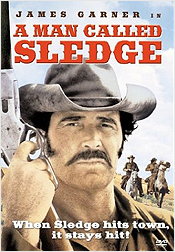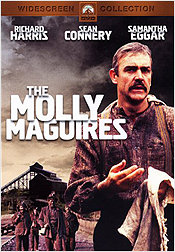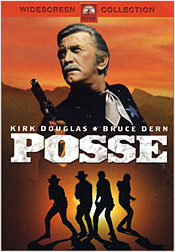 |
Site created 12/15/97.

page created: 5/26/04
 Back to Part One Barrie Maxwell - Main Page |
| Classic
Reviews Roundup #5 - May 2004 (continued) Baby, the Rain Must Fall (1964) (released on DVD by Columbia on March 16th, 2004) Baby, does my head hurt from having to sit through this tripe, at least the parts with Steve McQueen in them. McQueen, an actor with limited range whose work in a number of tough-guy roles both urban and western I still admire, should not be going around trying to impersonate a singer in southern roadhouses. He's not believable in such roles (never mind that the dubbing during McQueen's singing efforts is lamentable) and that exposes his limited range even more than usual. The story here is that of Henry Thomas (McQueen) who is paroled from the penitentiary after serving time for stabbing a man during a drunken brawl. Henry hopes to develop a career as a singer/songwriter while trying to deal with his wife Georgette and their small daughter who have come to join him. There's a bunch of nonsense about Henry's stepmother who seems to have placed a curse on him. Along for the ride is a deputy sheriff who tries to keep Henry in line. It all ends very predictably. |
| Columbia's
1.85:1 anamorphic transfer makes the film look about as good as
possible. The source material has some scratches and modest grain
comes through, but the overall effect is one of clarity and
crispness. There are a couple of sequences where the image seems a
little soft, but it's not a major concern. There are no edge
effects. The Dolby Digital 2.0 mono track is quite adequate,
providing a decent range to the music and clear dialogue.
Sub-titling in English and French is provided. Trailers for three
unrelated Columbia films are included. My Side of the Mountain (1969) (released on DVD by Paramount on April 27th, 2004) Jean Craighead George has written over 100 books during a writing career that dates back to the middle of the 20th century. In 1960, her story, My Side of the Mountain, about a young boy, Sam Gribley, who leaves his family in New York City to live on his own in the Catskill Mountains was published and immediately won widespread acclaim. It was recognized as a Newbery Honor Book, an ALA Notable Book, and a Hans Christian Andersen Award Honor Book. The author later wrote two sequels - On the Far Side of the Mountain in 1990 and Frightful's Mountain in 2000. In 1969, My Side of the Mountain inspired a film version that transposed the story to Quebec with the bulk of it being set in the Knowlton area. |
| Paramount
does its usual fine job with its DVD presentation. The 2.35:1
anamorphic transfer is very crisp and clear with vibrant, natural
colour and deep blacks. There's some minor grain in evidence, but
nothing distracting. The mono sound is clear and free of age-related
hiss or distortion. English subtitles are also provided. There are
no supplements. A Man Called Sledge (1970) (released on DVD by Columbia on March 30th, 2004) James Garner made one appearance in a spaghetti western and this is it. He plays Luther Sledge, leader of an outlaw gang, who is seeking a way to steal $300,000 in gold that is shipped regularly from the mine where it's extracted. Heavily guarded though the gold is, the weak spot in the shipment process may be the prison fortress where it's held temporarily en route. Sledge contrives to have himself locked up in the prison as part of his plan to make off with the gold. |
| Columbia
offers a 2.40:1 anamorphic transfer of the film that for the most
part looks pretty attractive. Colours are bright and realistic and
picture detail is very good although there is noticeable grain at
times. The image has some speckling, but is otherwise quite clean.
There are some minor edge effects. The Dolby Digital 2.0 mono sound
is adequate for the film's dialogue and effects. The music ( a
couple of songs) comes off less well, but since the songs are pretty
forgettable, you don't miss much. English and Japanese subtitles are
provided. There are no supplements although there are three forced
previews (none of which have any particular relevance to the title
at hand except that one is for a western) at the start of the disc
that one can skip over. The Molly Maguires (1970) (released on DVD by Paramount on April 27th, 2004) By 1970, Sean Connery had only one more outing as James Bond ahead of him and had already started to widen his acting horizons with parts in the likes of The Hill (1965) and Shalako (1968). The Molly Maguires was certainly an improvement over the latter even though it was more Richard Harris's movie than Connery's. It tells the story of a secret society of militant Irish-American coal miners who struggle, with the use of sabotage, intimidation, and murder, against the miners' exploitation by Pennsylvania mine owners. A detective is assigned to work undercover in the mines in order to win the trust of the miners and thence the Maguires themselves, with the intent of exposing the group and breaking up its influence. |
| Although
the source material used by Paramount seems somewhat the worse for
wear as evidenced by a considerable amount of dirt and debris in the
transfer (particularly in the earlier parts of the film), the 2.35:1
anamorphic image is quite nice-looking with vibrant colour and fine
shadow detail. This is particularly welcome given the excellence of
the film's photography by veteran cinematographer James Wong Howe
and director Martin Ritt's shot selection which really convey the
flavour of the dank and dirty mines, the limited horizon of the
company town, and the wasted countryside beyond. A restored mono
track and a newly constructed 5.1 surround track (which offers
little significant improvement) are provided. Either conveys the
story quite adequately, although restoration efforts have not
removed all hiss and crackle. English subtitles are provided. There
are no supplements. Recommended. Posse (1975) (released on DVD by Paramount on May 11th, 2004) By 1975, nearly any western was welcome to fans, given the decline of the genre's popularity. Doubly welcome was a western that offered quite a twist to the standard posse-after-an-outlaw plot. Of course, being a film of the mid-70s, its stance was entirely in tune with contemporary society's distain for politicians and the political process. Thirty years later, plus ça change, plus c'est la même chose. The film was a production of Kirk Douglas's own company, Bryna, and starred him as marshal Howard Nightingale who has hopes of becoming the state's next U.S. senator. Nightingale has trained a small, loyal posse of six men with whose help he is trying to capture wanted train robber Jack Strawhorn in order to fulfill a pre-election promise he has made. Nightingale has initial success, but Strawhorn manages to turn the tables and brings the story full-circle with the issue of loyalty at the heart of the plot's resolution. |
| Paramount
presents Posse in a 2.35:1
anamorphic transfer that offers a pretty decent presentation of the
Panavision and Technicolor image. Colours appear accurate although
not very vibrant. Picture detail is quite good and source material
deficiencies are restricted to some modest speckling and debris.
Paramount offers up a restored version of the original mono track
which sounds fine, but they have also included an new Dolby Digital
5.1 surround mix which works quite well. Its main impact is on
Maurice Jarre's music score which exhibits some good directionality
and modest use of the surrounds as a result. English subtitles are
provided, but there are no supplements. Recommended. Barrie Maxwell barriemaxwell@thedigitalbits.com |
Barrie Maxwell - Main Page
 |
| Site
designed for 1024 x 768 resolution, using 16M colors and .gif 89a
animation. © 1997-2015 The Digital Bits, Inc., All Rights Reserved. billhunt@thedigitalbits.com |




